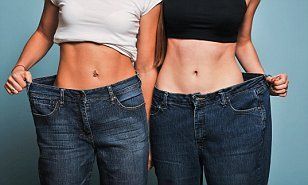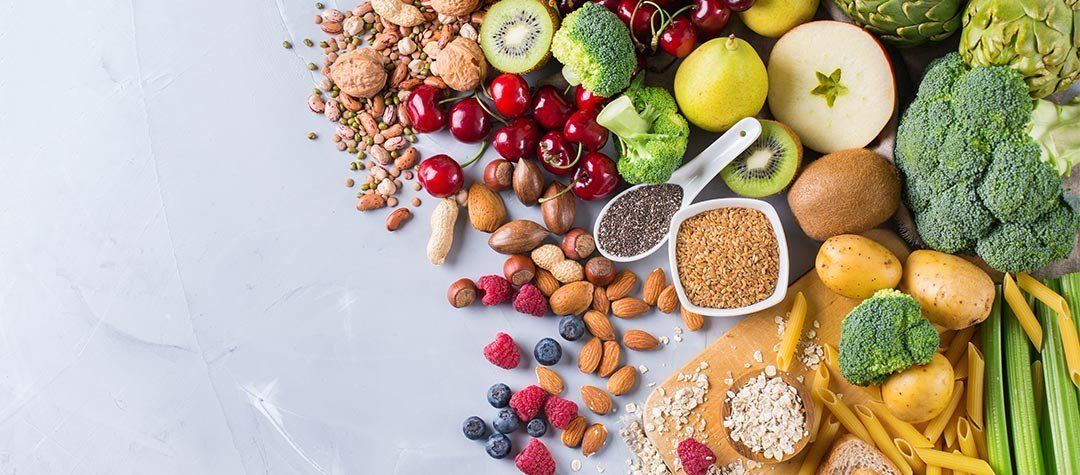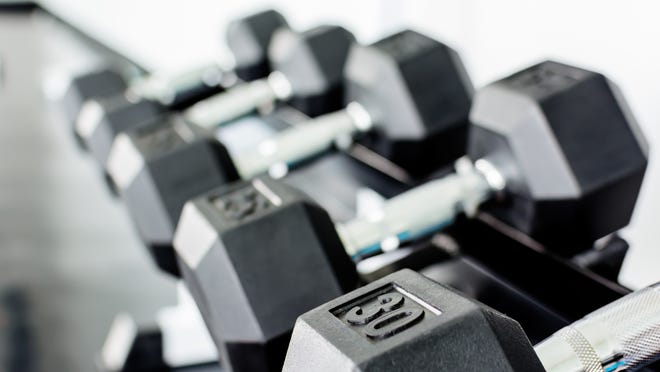VOTED CLEVELAND'S BEST HEALTH, FITNESS & WELLNESS FACILITY - LOCALLY OWNED & OPERATED
Blog
Ohh Yeah Blog

By brewer
•
27 May, 2021
Written by Joseph Castro - May 24, 2021 I have always believed that motivation comes from the "accepted" decision to do something. But not in just words. It is about actions. The best intentions are meaningless if those intentions fail to translates into achieving something. Additionally, I believe that unless you give whatever you are attempting the priority needed to "do" it, it will just become another failed attempt making it more difficult each time you decide to try again. Life priorities are where we dedicate our time, efforts, and resources. The higher the importance you give something, the more likely it that you will follow through. We share the same 24 hours in a day, and how we choose to use those hours is based on what is most important in our lives. If you do not give exercise and lifestyle choices, in general, the priority it requires, I guaranteed you a future of health consequences. I find it interesting that if you ask someone to rate the importance of their health on a scale of 1 - 10, they will usually respond with an 8 to 10. Using the same scale, asked again how hard that person works at maintaining their health (diet, exercise, stress control), and they will respond with a 3 to 6. The denial reveals that their health is not an 8- 10, but a 3 to 6 priority. The way to motivate yourself is to take action but thinking less about doing it and do it. It is so easy to find an excuse. Make regular exercise the normal part of your week, like caring for your children, work, or anything else that you do regularly. In the final analysis, "well done, is always far better than "well said."

By brewer
•
10 Mar, 2021
The simple answer is no, fruit does not make you fat unless consumed as part of an overall surplus of calories above your energy expenditure (and even that is not as simple as calories in calories out). Some are quick to point out that "fruit may be healthy, but it still has calories." To me, that is kind of like saying water is wet. Ya, so? In my opinion, the discussion around fruit should be about the quality of the food, not the quantity. This noise around calories has not worked. Social media sites are replete with discussions about cutting, burning, counting, reducing, and avoiding calories. Yet, the obesity epidemic has remained in full swing, putting the current generation at risk of being the only generation that will not see an addition to their life span for the first time in recorded history. But that is another discussion entirely. That being said, fruit is a nutritionally dense food that gives you a significant return for a nominal amount of calories. As for the sugar, fruit contains mostly fructose, not glucose and the body metabolizes them along different pathways. Fructose, for example, does not cause an insulin response like glucose does. Glucose is extracted from the carbohydrates you consume when the food moves from the stomach into the small intestines. From there, it moves into the bloodstream and is metabolized as an immediate source of fuel for muscles or the brain. If it is not used for one of these purposes, it is stored as glycogen in the muscle or liver for later use. Insulin is produced in relation to the glycemic index of the carbohydrate consumed. Glucose is maintained within a very narrow range. Excess amounts can be lethal, so insulin brings it back down within the limited range by shutting blood glucose into cells for immediate use or storage. Fructose, by comparison, is metabolized only in the liver and is used to replenish liver glycogen or triglycerides (blood fat). Contrary to what you might read it does have an energy-producing function, however, along a different metabolic pathway than glucose. There is concern about excessive fructose amounts because the body treats it more like a fat than carbohydrate. But this concern is far more relative to high fructose corn syrup found in highly processed foods. Not the levels found in fruit. Additionally, fruit contains fiber, so any glucose in the fruit produces a more controlled insulin response. Those who will point out that some fruits are high on the glycemic index (insulin response) but what they fail to mention is that while some fruit may have a high glycemic index, they have a very low glycemic load. This means that to produce an insulin response or fructose consumption of concern, you would have to eat a lot of it. For example, watermelon has a glycemic index of about 77 (100 is max), so it is considered a high glycemic index food. But watermelon is mostly water, so you would have to eat a ton load of it to make a difference. Also, recall that it contains fiber, so the insulin response is better regulated. So how much fructose per day is too much? Well, I have seen recommendations as low as 25 grams per day and as high as 100 per day. So I guess somewhere in between. If we take 75 grams, then consider that…., Bananas contain about 7.1 grams of fructose. You would need to eat 10.5 bananas to get to the daily recommended limit by fruit alone. Cherries contain about .04 grams of fructose each. You would have to eat about 188 cherries to get to the daily recommended limit by fruit alone. Apples contain about 12.6 grams of fructose. You have to eat six apples to get to the daily recommended limit by fruit alone. Watermelon contains about 11.4 grams of fructose per cup. You would have to eat 6.6 cups to get to the daily recommended limit by fruit alone. So, in theory, you could have one banana (7.1 gram), one apple (12.6 grams), two (cups) servings of watermelon (22.8), and 81 cherries and still be around 75 grams of fructose. I am not recommending that you eat this amount, only to demonstrate that if you eat two to three pieces of fruit per day as part of a balanced diet, it will not make you fat. Remember that high fructose corn syrup is prevalent in many foods, so you could exceed the recommended amount in a day very quickly regardless of the amount of fruit you consume. Fruit is one of nature's balanced foods that was intended to be consumed by people. So, don't let anyone try to convince you that you should not eat certain types. All fruits are beneficial. People trying to advance their agenda will always try to complicate what evolution and nature have simplified for us over hundreds of thousands, if not millions, of years. Enjoy your fruit. Gee? Watermelon? Sound pretty good right about now.

By brewer
•
16 Feb, 2021
I do not believe that there is one best way to achieve weight loss and add lean muscle mass. However, there is the optimal way to change your body composition whereby you reduce body fat levels and add lean muscle mass. Changing your body composition is not the same as merely losing weight or adding some muscle. The human body has an overriding survival instinct that is adaptive but will only respond if it must to maintain a state of balance around need. Create a need for change, and the body will adapt or remove the condition, and the body will again adapt. Consequently, the optimal way to change your body composition is to create the need to drive the adaptation positively. Fat loss: The optimal way to reduce body fat levels while maintaining as much lean muscle as possible is to lose it slowly. The norm of 1 to 2 lbs per week remains the best approach since all weight loss will be a combination of fat and muscle at a ratio of 60% to 80% fat to 40% to 20% muscle. Ideally, the "weight" loss is at the 80% fat to 20% muscle ratio. It takes patience and consistent adherence to your diet (meal plan) and exercises routine. The right mix of macronutrients (carbs, fats, and proteins) is critical to how effectively you will reduce your fat levels. Do not count on just reducing calories or creating an energy deficit. The standard daily 500 caloric reduction to lose one pound per week (3,500 calories = (1 lb) is far from a precision process. What you eat and when you eat it affects your outcomes. Add the fact that calories are just an estimation of the energy in a particular food type. The actual caloric count of food can be much different. Another factor to consider is that the FDA allows for up to a 25% error +/- on food labels, which adds to the possibility that the amount you may think your eating is not what you are eating. Lastly, the net caloric count of a particular food type (carbs, proteins, and fats) is never what they are initially. It takes energy to use energy; proteins uses about 25% of their calories in the conversion to amino acids, carbs about 6% to 8% in the transformation to glucose, and fat about 3% in the conversion to lipids. All in all, counting calories and not seeing results can be quite frustrating. However, counting calories is still helpful in that to the degree that they are in error, they will always be in error to the same degree. So, counting calories can help to set a baseline measurement. To be useful, however, consider them along with tracking macronutrient ratios. Lean Muscle Mass: Muscle is a precious commodity concerning body composition. Unlike body fat, the human body does not retain lean muscle mass unless there is a need for it., the body has no mechanism to store unused protein, which is required to build and sustain lean muscle mass. In the final analysis, what matters most is your exercise routine's consistency, which includes an appropriate mix of cardio, weight resistance training, core, and balance exercises, and a nutrient-dense meal plan with the right amount of calories to fuel your activity level. My advice is to keep things simple and find activities that you enjoy and healthy food. It will increase the odds that you will stick with it.

By brewer
•
18 Jan, 2021
Written by Joseph Castro, January 18, 2021 There are several moving parts to a comprehensive approach to achieving your goals regarding your fitness levels, maintaining a healthy weight, and body composition. The main categories include diet, exercise, recovery, sleep, and hydration. Your success or lack thereof depends on how well these components align with each other, and all of them matter. The human body is designed for efficiency and survival. It does not make adaptive changes without an absolute need to do so. Even then, only to the degree necessary to accommodate the specific demands needed to re-establish a state of equilibrium or balance. These might include changes to our weight set point, body composition, Basal Metabolism Rate, added lean muscle mass, or reduced-fat deposits. Each of these examples of possible physical adaptations is dependent on the alignment of the previously referenced components. Limited attention to any one of them will have a limiting effect on the others. Three variables affect the outcomes of any exercise, i.e., frequency, duration, and intensity. In other words, how often you do it, how long you do it each time, and how hard you work at it. A change in any one of these will alter the outcomes. It would be best to change things frequently to keep the body working to adapt to the exercise. If you similarly do something, the body knows what to expect, and your progress will plateau. Your diet is critical to your outcomes. If you are eating everything and anything with no consideration of nutritional density or macro nutrition ratios (carbs, fats, and proteins), you are quite frankly working against yourself. Exercise creates the opportunity for physical improvement, but the body cannot do this without the necessary materials needed for repair and growth. A structure is only as sound as its foundation, and food provides the basis to your “physical” foundation. It is an unavoidable fact of human biology, and it is non-negotiable. Recovery and sleep are other vital elements. Your body needs time to rest between training, and the repairs and growth occur most when you are asleep. So, it would be best if you kept both in mind. The body is 60% to 70% water, so its importance should be self-evident. Drink enough water to remain hydrated. Dieticians recommended that you drink ½ your body weight in ounces. For example, a 150 lbs. person should minimally drink 75 ounces of water per day. Taking the time to plan out your health and fitness approach will greatly improve your odds of achieving your long-term goals.

By Austin Phillips
•
06 Jan, 2021
Sunday, January 3, 2021, Written by Joseph Castro: The quickest way to lose weight is to stop eating. But of course, you will gain it back as soon as you start eating again. Sound absurd? Well, any of the other "quickest" ways will have the same result. If you are interested in the best way to lose weight and keep it off, then what you should be asking is, "what is the correct way?" The correct way is to lose weight is slowly. The same way you gained it. A weight loss goal of 1 to 2 pounds per week is the healthiest way. Losing weight by eating a more nutritious diet and increasing your random daily physical activities to include regular exercise allows your metabolism to make the necessary adjustments. These adjustments are necessary to accommodate changes to your weight set point, Basal Metabolism Rate, and body composition. The body is designed to remain in metabolic balance around your energy balance (calories in/ calories out). Once established, the body will defend that energy balance. Unless you make sustainable changes to the balance, either "up" (more calories-in than you use) or "down" (less calories-in than you are burning), it will stay at that level. On average, you can expect weight set point adjustments over 10 to 12 weeks. The key, however, is the consistency in the changes over time. When you attempt to make dramatic changes to your diet or activity levels, the body perceives them as threats to its energy reserves, and it will fight back. This push back generally manifest as weight loss plateaus. But if you are insistent on the quickest way. Stick with the "stop" eating. You will lose weight, guaranteed.

By Austin Phillips
•
27 Dec, 2020
December 27, 2020 - Published by Joseph Castro That is the million-dollar question. There is “evidence” on both sides of the equation. So, who can you believe, the science funded by the pharmaceutical industry that wants to keep people turning to prescription drugs to address symptoms of disease with no incentive to promote prevention or the nutraceutical industry who wants you to spend money on products that claim to prevent the diseases of aging, and in some cases suggests the cure of others? We believe that the truth lies somewhere in the middle. What is true is that eating a truly nutritional balanced diet can be very challenging. It requires a lot of thought and planning. Serving sizes, food combinations, the true nutritional quality of food, and the best macronutrient rations are just some of the challenges facing those who attempt to balance the daily 30 macro and micro nutrients required to sustain a healthy life and meet the recommended daily allowances set by the FDA. Add to this the wide disagreement in the amounts of these that are optimal. All in all, this is a challenging endeavor for most people. So, the questions become, do you error on the side of caution or risk? It is an easy answer. For just pennies a day you can add a safe guard to what we believe is a healthy approach to eating. Just remember that supplements should compliment a healthy diet, not replace it. In the final analysis, it is up to each of us to make informed decisions about our lifestyles and choices and practices. You will not know if your decisions were right or wrong until you arrive at old age. Wisely choose because your choices will provide a future of benefits or a future of consequences. Our advice is to eat foods in as close to their natural state as possible, mostly plant based, move more, get sufficient sleep, avoid stress and supplement with the right vitamins, and you will greatly increase the odds of achieving a youthful longevity.
CLUB HOURS
Monday: 4:00AM -12:00AM
Tuesday: 4:00AM -12:00AM
Wednesday: 4:00AM -12:00AM
Thursday: 4:00AM -12:00AM
Friday: 4:00AM -10:00PM
Saturday: 7:00AM - 7:00PM
Sunday: 7:00AM - 7:00PM


